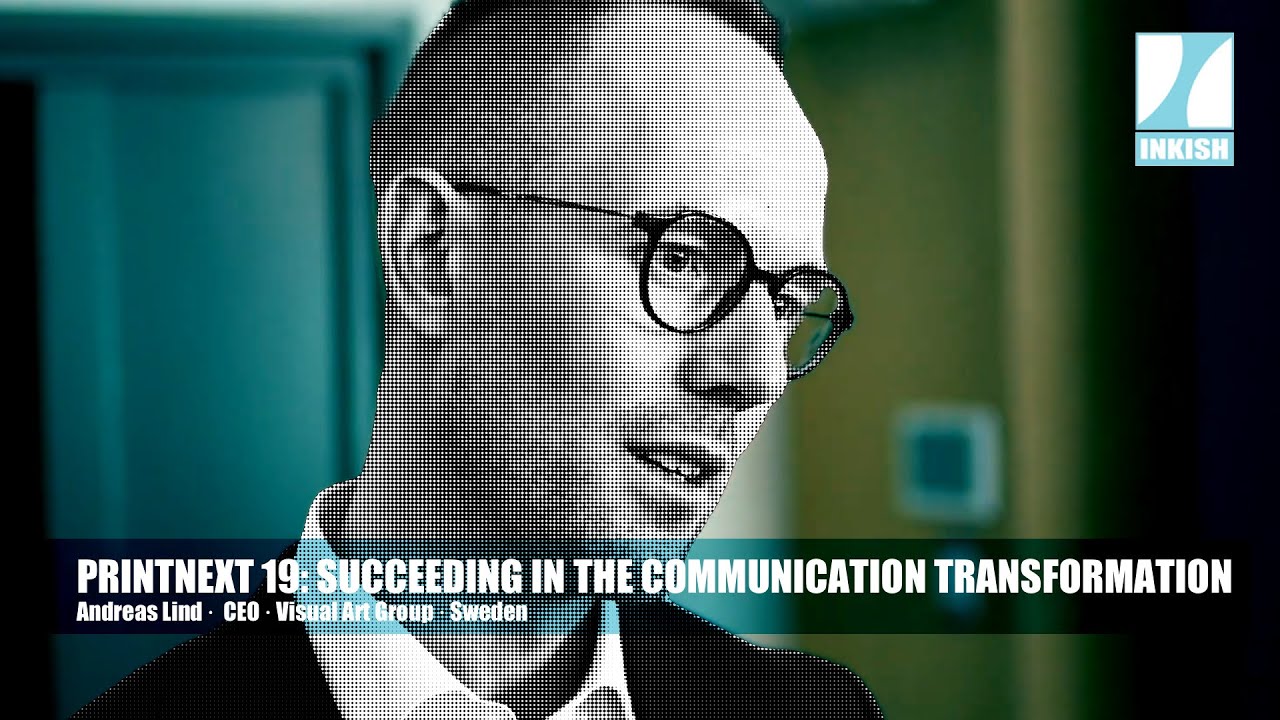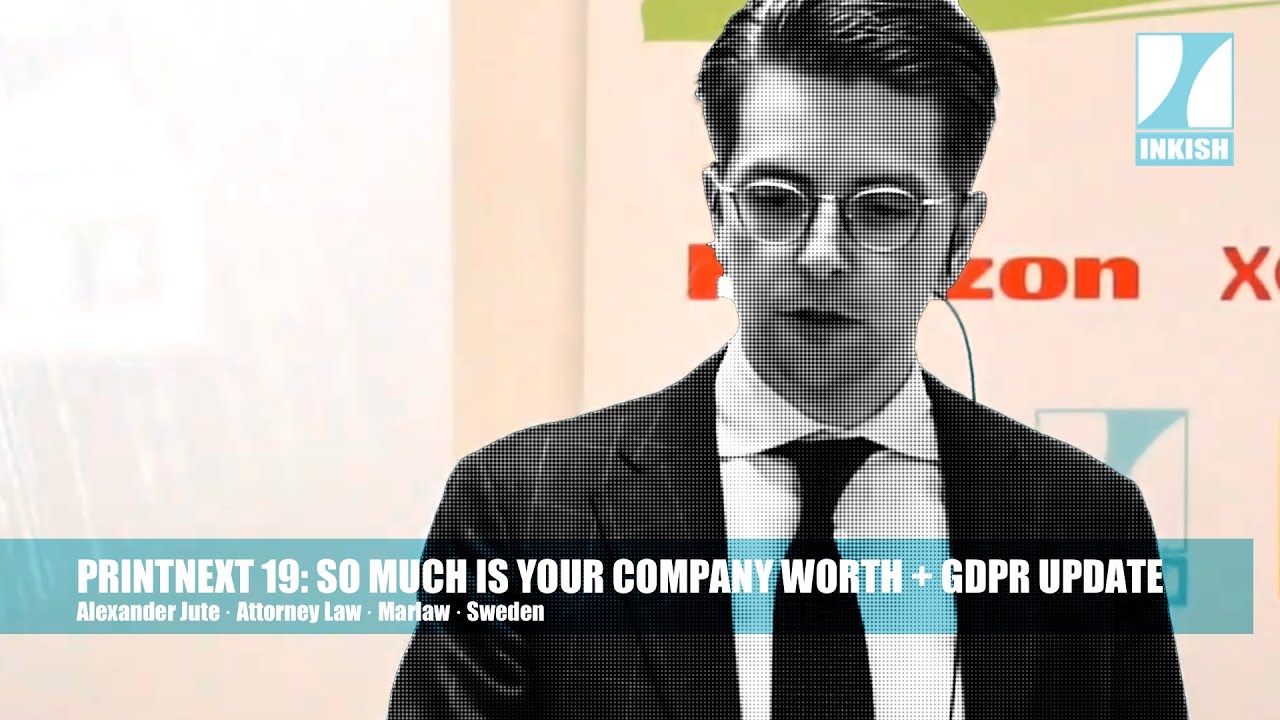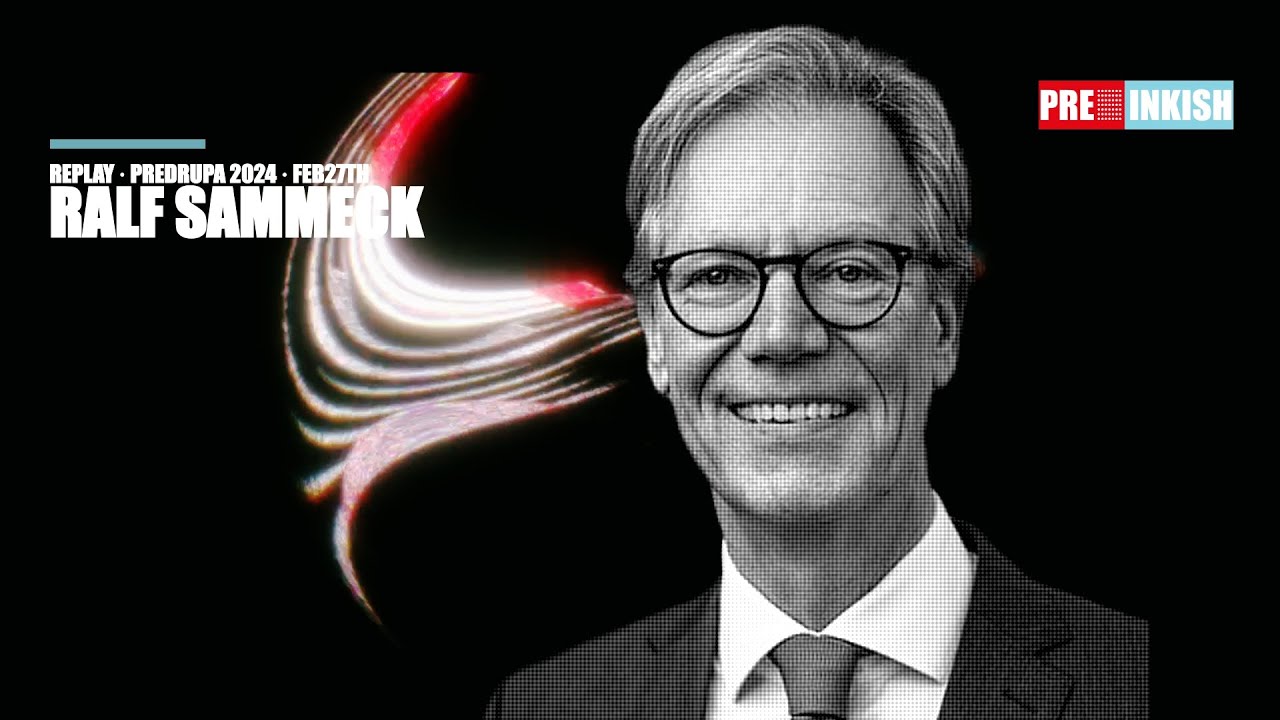PRINTNEXT19: Where is the Profitability in the Printing Industry · Ravindra Parasnis · CEO
The Swedish Federation of Printers organize 400+ printing companies in Sweden and part of the work CEO Ravindra Parasnis has done is an intensive research work about “Who makes money in the printing industry.” With data from more than 2.000 companies over 7 years, the data is quite comprehensive.
At PrintNext19 Ravindra Parasnis gave an update and status of the Swedish printing industry – it’s very interesting and if you choose to download the presentation on INKISH.TV you can see also the changes from the previous report.
Though this is data from Sweden, the results and the trends probably are very similar in most western countries. VERY interesting and something that the global print-industry should be very interested in!
Watch, Like, and Share.
Okay, so I’m representing Grafiska Företagen who organizes about 80% of the turnover of the graphic industry in Sweden. We do various kinds of analysis and so on describing the situation in the graphic industry. I’m going to share with you our most recent analysis of the graphic industry in Sweden. What we’re going to look at is how is the graphic industry over time compared to some other sectors of the Swedish industry. Also looking a little bit more closely at the value chain. Some parts of the value chain in the graphic industry, what segments are really performing well, what is more difficult is. Then we will zoom in more specifically on various segments in the graphic sector, and finally let’s have a look at who are the real, the best performing companies over time in our industry. That’s the long and short of my presentation.
What we have done together with a research firm, Bisnode, we have analyzed some close to 2000 companies in the graphic value chain over a number of years. We did a study covering the years 2008 to 2014 and we’ll have a look at some comparisons and see what has happened during these two time periods. You see there is some overlap to 2012, and that is because we want to have longer series of time to really show the big trends. The reason why 2018 isn’t there is that a lot of companies haven’t filed their annual reports for 2018 yet. For those who have, we have checked that as well and it doesn’t really change what I’m going to share with you today.
Also, we are comparing this with how all Swedish businesses is doing our relative competitiveness. We’re specifically looking at the engineering industry because that’s the backbone of Swedish industry, and also the food sector which is a stable, very domestic, not so sensitive industry when it comes to the Business Cycle. Well, you figure that one out.
We’re using a method called the simpler method and thereby you look how effectively companies are using capital and human resources in order to create the added value. Basically you do that so you can compare very capital intense companies with also very people intense companies. You get the classic four field where you understand you want to be in the upper right position rather than in the lower left position.
On the vertical axis you have the profitability index and on the horizontal axis you have how much added value you have created during the period or rather, or if you have declined in added value.
Just let’s have a look at some basics, how the graphic industry is compared to some other parts of the industry. As you can see, the graphic industry has shrunk in added value but is performing relatively well in terms of profitability. The flag that you see, that’s the sum of all Swedish businesses, so if you are on the line you have average, your competitive average as the sum of all Swedish companies. You can see that the engineering industry has performed very well during this period and you also see that the food sector is doing quite well.
Where the main difference is how is the graphic industry competitive? Well that is mainly by reducing number of employees. As you can see, during this period 12 to 17, we reduced to about one fifth of employees in the sector. Thereby remaining profitability.
Okay, just let’s then have a look at a little bit more of the graphic value chain. In the interest of time I’ll just take a couple of measurements. If you feel that prices, raw material prices, has increased a lot, you’re absolutely right. You can see the profitability of the paper manufacturers, they haven’t grown so much in added value, but their relative profitability has increased quite a bit. The feeling that you have is absolutely right in that respect. Also you see advertising agencies which is a part of the value chain. Booming Swedish business means also that they are has grown a lot and they’re also making a fair bit of money.
Let’s just have a quick look at how this compares to the previous period when we measured 2008 to 2014, and see what has happened between these two time lags. The blue dots are representing the previous period. This you see, the graphic industry is still, let’s say competitive but in negative growth, whereas paper manufacturers have been really good at shutting down capacity and thereby increasing prices. Advertising agencies have really been growing both in terms of added value and in profitability whereas, I’ll just stay with that.
Okay, so that’s part of a little bit how we’re doing in the big picture, little bit about the value chain, and now let’s go a little bit deeper into the different segments of the graphic sector. I’ll just share with you, we’ve done this also on packaging companies but we’ll, in the interest of time again, we’ll just have a look at let’s say what maybe is more relevant here today. Again, what we’re looking at is this. Where do the different segments over a period, where are they? In the lower left or upper right? Let’s have a look at that.
I’m introducing a term here. [foreign language 00:07:30]. That’s commercial printers, your typical civil [foreign language 00:07:35] offset based many times, but also with digital printing. What you see is that book binders have average profitability, a bit of negative growth. The commercial printers doing pretty good but negative growth. Those who are really struggling, that’s of course newspaper printers and magazine printers, they don’t even fit into the diagram. That’s quite tough.
Is there anything on the green side? I mean, that’s really what we want to know, isn’t it? I know because I can see it on my screen. Yes there are. What you see again, advertising agency, media bureaus and so on, really, really doing well during this period. [foreign language 00:08:40], that means display printer, textile printing, industrial printing, those kind of companies are also doing very well. You can see the brokers growing at good profitability, but also large format printers are on the growing side during this period.
Here’s just the complete picture. Let’s then look at what is, again also here, what has happened since the former period, 2008 to 14 compared to 12 17.
The blue dots representing the former period we measured. As you can see, commercial printers and book binders have increased their relative profitability, whereas pre press, pretty tough. Has gone from a somewhat better position but are struggling. Then when we look at the upper side, you can see that brokers and, let’s say specialty printers, from an already very strong position, they have further strengthened their position during this second period. Large format printing, still growing but not at the same speed, being a bit more mature in that sense. A lot of printers have during this period entered into this segment and also meaning that taking down profitability a bit, but still growing.
Brokers, not growing at the same speed but have increased profitability over this time. Again, you don’t want me to show, and I’m not going to do that, newspapers and magazine printers don’t fit into this type of diagram.
Can I ask a question?
Yeah.
How did you handle companies that offer many of those things?
Then we have put them at where the majority of their business are. Of course. Good question, Ula. You cannot fit all companies into, I mean, since many companies are quite diverse, specifically when it comes to large format prints, since most printers will print large format, and then we have made a selection, really decided where do they fit the most.
Now does this mean that, I mean, we are seeing a picture, some the growth but also some segments that are declining. Of course these dots don’t represent size. The commercial printers, the [foreign language 00:12:14], that’s of course the bulk of the business in the graphic industry and that’s a bit on the declining side. Does that mean that everything is bleak and dark and so on? Of course not because all types of situations create opportunities and there are a lot of growth opportunities in mature, declining markets. Typically what you do, you either buy market share, you consolidate, you buy assets and so on.
The next picture I’m going to show you is not a profitability picture, but it shows you on the vertical axis how the number of employees has changed with our largest printers combined with their what type of added value they have created. It’s not a profitability slide. Just have that in remembrance. Then of course you can see that our biggest printers are acting exactly like you should in this type of markets. Acquire market share, acquire assets, consolidate, and grow.
You have on the vertical axis, you have the growth in number of employees. That has been done mainly through acquisitions and you see exact on the very far right that has really, really increased both number of employees and added value. You can also choose a totally different path, which has been doing, partly sort of exiting this type of the business or repositioning themselves. Again, this is not a profitability slide. It just shows how our biggest printers have been acting during this period of time. It’s strictly logic. There are always business opportunities.
Okay then let’s have a look of the cliffhanger. What are the most or the best performing companies in the printing industry in Sweden? Will it be from the same type of segments because we saw that some of the segments are growing? Large format brokers, et cetera, and some segments are in quite some decline. We’re going to look at the top 10 best performing companies. What we did is that we looked, the defining factor was the operating margin, looking at the operating margin over all these years, 2012 to 2017.
We put some requirements. They should have had growth, more than 10 employees, and also they should exist during the whole period. Since there are acquisitions going on and so on, so if you haven’t existed you’re being acquired by some other company, you typically don’t get into the list, but these were the criteria and let’s have a look then at the 10 best performing companies. They are listed in alphabetical order, so there’s no other, they are listed in alphabetical order. That’s it.
Let’s have a look. These are our top performers seen over time. These are, by all means, if you compare them to other industries, other segments, other type of sectors, these are extremely well performing companies. As you can see, if you recognize them, we have some pre press companies, we have specialty printers, we have normal commercial printers in here, so really this is not a game of what assets you have, but there are other explanations. Then of course one wonders, if this is this period of time, the last six years, how many of these companies were also in the top performing list in the previous period? It’s not all of them for sure. Could I have a guess? How many of these 10?
50%. Almost right. These, so six out of 10 were also the best performing companies in our industry in the previous period. Over a period of 10 years time, these are companies that have been performing extremely well. Great companies tend to be great over time as well. I’ve met a number of these companies and I can assure you from my point of view it’s not about assets. It’s not about having a real specific customer base that nobody else can access, but it’s really a question of the people, the management, and the fundamental belief that the value that we provide to our customer is equal or higher than the price we charge. When we have the right to charge a price according to the value that we create for our customers.
Some of these companies are here today and I would advise you since this is a networking thing, this is why we’re here, discuss. Let’s share some thoughts, your views, what are their views? How are they thinking about business? This is really, really fantastic when you analyze a lot of companies and you see that it’s absolutely nothing in the assets, the machines or so. It’s all here. That’s how you perform.
These were some insights into how the Swedish market is doing. If you have questions and so on, we have further analysis that we can discuss, but I hope this gives you some thoughts because this is what we do. We give food for thoughts, so hopefully you can get inspired or think a little bit about what do you want to do with your own company when you reflect a little bit around these things. Thanks a lot for your attention?
‘Where is the profitability in the Printing Industry’ – presentation by Ravindra Parasnis:
Download the presentation here.








































































